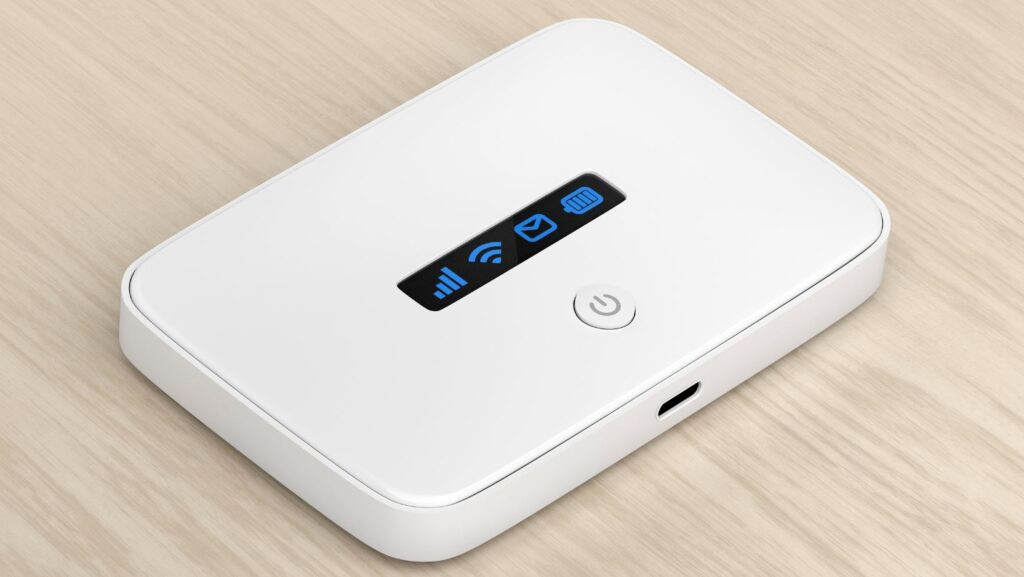Staying connected during a move is no longer optional. People rely on phones, apps, and other travel essentials to guide every stage of the process. Portable tech keeps you connected while moving, so you can keep your information secure, stay in touch with family, and maintain access to work or study commitments. This reliability makes modern devices more than just accessories, as they are essential tools for managing change and reducing stress.
Key Portable Devices That Help You Stay Connected
Modern devices play a central role in keeping you connected while on the move. Smartphones and tablets have become core tools for managing navigation, communication, and personal information. With strong mobile data coverage and offline features, they offer constant access to the digital services you rely on. Tablets, in particular, provide larger screens for reading documents or entertainment during travel.
Portable Wi-Fi hotspots, sometimes known as MiFi routers, allow multiple devices to share a single connection. This helps families, coworkers, or travel groups stay online without depending on insecure public Wi-Fi networks. Power banks and portable chargers also solve one of the biggest concerns of moving days: battery drain. Keeping devices powered prevents interruptions and ensures essential tools remain available.
Wearables like smartwatches and connected earbuds provide quick access to calls, notifications, and messages without needing to pull out a phone. These devices simplify multitasking when your hands are full with boxes or luggage. Each of these technologies works together to create a network of support that follows you wherever you go.
Avoiding Scams and Similar Issues
Portable tech is not only a tool for staying connected but also a defense against scams. People moving or traveling often face heightened risks because they depend on quick online searches, public Wi-Fi, or unfamiliar services. Scammers exploit this by creating fake listings, sending fraudulent messages, or offering suspicious deals.
Your devices can help prevent these problems when used carefully. VPN apps shield your data on open networks, while secure payment platforms add layers of protection. Authentication tools like fingerprint or face ID reduce the risk of unauthorized access to accounts. Using official app stores and verified websites also limits exposure to harmful downloads.
Awareness remains the strongest safeguard. Knowing what to expect makes you less likely to fall victim to misleading offers. Before booking services, take time to check reviews, verify company details, and confirm payment methods. These simple steps can help you avoid being scammed while maintaining a smooth and secure move.
Connectivity Solutions on the Move
Reliable connection is about more than travel gadgets. Mobile data plans and roaming services are the backbone of portable access. Choosing a provider with wide coverage ensures fewer dead zones when traveling long distances. For international moves, prepaid local SIM cards help avoid expensive roaming fees while giving faster speeds in the new location.
Satellite phones and portable satellite services serve as backup when moving to areas with little or no cellular coverage. Though expensive, they provide unmatched reliability in remote settings. Offline apps and tools add another layer of security. Maps, translation apps, and offline storage for important documents reduce dependence on constant internet access.
Signal boosters and portable antennas extend connectivity in rural or mountainous areas. These solutions are vital for people whose moves involve crossing regions with unreliable reception. Together, these services offer practical methods to maintain access regardless of where the journey takes you.
Challenges and Risks to Be Aware Of
Technology makes movement easier, but it comes with cybersecurity risks and challenges. Battery life is the most obvious problem. Long days filled with travel and heavy device use can quickly drain power sources. Carrying extra chargers and power banks becomes necessary to avoid being left without access.

Security is another issue. Public Wi-Fi networks can expose data to cyberattacks. Using devices without proper safeguards may put private information at risk. Portable tech keeps you connected while moving, solves problems, and also creates opportunities for threats if precautions are ignored.
Device compatibility is an additional obstacle. Some chargers, plugs, and SIM cards may not work in new regions. Planning ahead prevents these frustrations and ensures a smooth setup. Cost also matters. High data charges or frequent upgrades can put a strain on a budget if not monitored carefully. Identifying these risks helps people take simple steps to avoid disruption.
Real-World Scenarios and Use Cases
Portable tech supports different lifestyles and needs. For digital nomads, staying connected ensures they can meet client deadlines while moving between locations. They rely on hotspots, cloud storage, and communication apps to stay productive. Without these tools, mobility would mean downtime and lost income.
Families relocating to new homes benefit from devices that provide entertainment and navigation. Tablets and smartphones keep children occupied during long drives while parents use GPS apps for clear directions. This combination eases tension and helps the entire household adjust to change.
Outdoor adventurers face more serious connectivity challenges. Hikers and campers entering remote areas need satellite options or offline tools to ensure safety. For them, portable tech is less about convenience and more about security.
Business professionals moving for work assignments depend on mobile devices to maintain access to emails, meetings, and presentations. These tools let them continue responsibilities without interruption, proving that connection remains critical in fast-paced industries.
The Role of Portable Tech in Future Moves
Devices will continue to evolve. As 5G expands, faster speeds and lower latency will make remote work, streaming, and video calls smoother during moves. Portable solar chargers and improved batteries will address one of the most common problems: limited power. Wearables may also take on more responsibilities, giving real-time health monitoring or voice-controlled organization during hectic moving days.
The integration of smart assistants into mobile devices will help people plan moves more efficiently. Voice commands can schedule deliveries, adjust reminders, or share updates with family. This next stage of portable technology promises more than connection, offering active support through intelligent systems.
The Gist of It
Moving is a time of stress and disruption, but reliable tools make it manageable. Portable tech keeps you connected while moving, ensures reliable communication, provides access to navigation, and keeps work or family obligations on track. With preparation, you can avoid pitfalls such as poor battery life, security risks, or scams. By choosing devices and services suited to your needs, you gain stability during a period of change. Staying connected is not just about convenience but about ensuring safety, productivity, and peace of mind.




